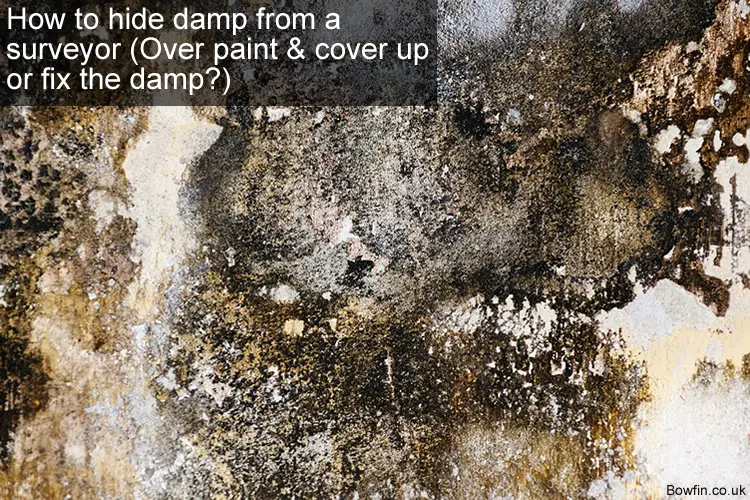
When you sell your house you have to assume the buyers will buy using a mortgage to finance the purchase. On that basis, you also have to assume that the mortgage company will insist on a surveyor checking your house for damp.
To hide damp from a surveyor can’t you just paint over damp?
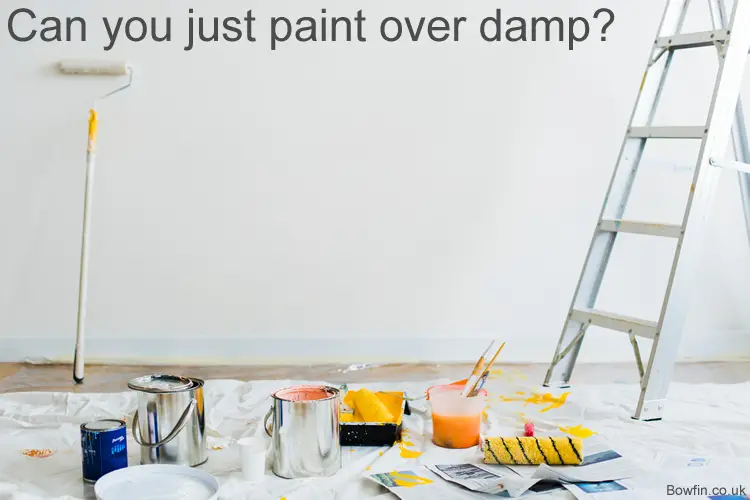
How to hide damp from a surveyor: It’s possible to visibly hide the damp from a surveyor using cover-up paint, but this doesn’t solve the problem. Attempting to hide damp from a surveyor won’t work. If you sell your house to a person who requires a mortgage, their mortgage company will insist on a survey and the surveyor will pickup the damp problem.
Using paint or other materials to cover over damp will allow the damp to continue to cause damage beneath the layer fresh of paint or other cover-up materials you use.
You could try to wipe the mould off before you paint over it. But this will not fix the underlying cause of the damp, especially if it’s rising damp.
Even if you manage to paint over damp to try and fool a surveyor, this won’t work. The surveyor will discover the underlying problem in any case.
So instead of painting over damp, fix the damp problem instead.
Please also read this article to discover how you could save £71,475 on your next mortgage if you sell your house and rent before buying again. Even I was amazed when I did the calculations!
How to hide damp from a surveyor and do mortgage surveyors check for damp?
As already noted, you are better to fix the damp problem rather than to hide it.
Let’s begin with what the heading of this article is about, and that’s “How to hide damp from a surveyor“.
If you’ve read any of my previous articles, or if you know me (which if you’re new to my blog you won’t yet), but I hope you’ll soon understand that I’d never provide advice about how to mislead anyone.
My motto is to treat others how you wish them to treat you.
Think about how you’d feel if after buying your new dream home, you find out it’s got a damp problem. Reflect on how this unexpected cost of perhaps hundreds or possibly thousands of Pounds to fix would affect you!
That’s the moral lesson over. But it’s entirely up to you if you want to try to hide damp from a surveyor. Good luck with that one, as it’s unlikely to work. At the very minimum, a home surveyors report will check for any damp problems.
Fix the damp problem don’t hide it

Instead of looking into how to hide damp from a surveyor, get a quote to fix it. Rising damp or penetrating damp can cost to fix, but this will enhance your house and help it to be sold.
Not many buyers will buy a house with a damp problem. But having said that, if you were unaware of your damp problem and this only came about after a mortgage survey, you could negotiate with your buyer.
To avoid your house sale falling through due to rising damp in a survey, either offer to fix the problem, or knock the cost of correcting the damp problem from the value of your house. This assumes the buyer’s mortgage company will be happy to lend on a house with a damp problem.
More Reading: What to do if your house sale has fallen through twice (A lifeline of ideas)
How to discover damp before you list your house with an estate agent
It’s always a good idea to fix any damp problems before you list your home with an estate agent. Discovering if your house has a rising damp problem is actually very easy to do. All you need is a damp meter, which can easily be purchased from a DIY store like B&Q or Homebase in the UK. Damp meters are not expensive and very easy to use.
If you want to know how to use a damp meter, watch the video below.
Video on using a damp meter
Do mortgage surveyors check for damp?
Mortgage surveyors will check properties for rising damp with a damp meter and will look for any signs of penetrating damp too.
They will also be checking for any signs of damp caused by plumbing related problems as a result of leaking water or drainage pipes.
Will a homebuyers survey pick up damp?
The surveyor who carries out a homebuyers survey will as a part of his inspection damp test the walls of the house. This will ensure that no damp is present, but if it is they will flag it up to the mortgage lender.
In addition to testing the walls, the surveyor will also inspect the damp proofing and drainage for the house.
How do surveyors check for damp?
When a building surveyor carrying out inspections for a bank or other lending institutions they will check for dampness using an electrical conductance moisture meter.
These moisture meters are used to measure the percentage of water in whatever the probes are inserted.
This includes the internal walls of your house. If the moisture level is higher than it should be (i.e. there’s a damp problem), the moisture meter will indicate this to the surveyor.
What are the alternatives to fixing your damp problem
What are your alternatives to fixing your damp problem. This is other than trying to hide it from a surveyor of course?
You may not be in a position to fix the damp problem for financial reasons. Or you may have a time issue and need to sell your house quickly.
If you can’t fix the damp issue for whatever reason, you’ll find that it’s quite a challenge to sell a home with damp. Most people like a home they can move into without problems.
A damp issue is high on the list of things that would put potential buyers off! Damp can also cause problems for mortgage companies too, as some may not lend or may put a retention on the mortgage for the buyer. A retention is an amount they withhold until such time as the problem is fixed.
If this is you, what are your alternatives, apart from attempting to fool a surveyor by hiding the damp problem?
One solution is to use an assisted house sale. With this option, we would advance you enough cash for you to move on, so that we take over your damp problem, and fix it for you.
For more information on an assisted house sale, please read the following article.
More Reading: What is an assisted house sale (Assisted sale cash advance)
Can you sell your house with damp?
Whilst it’s possible to sell your house with damp, if you’re able to afford to fix and treat the damp problem before you put your house on the market, this is a much better approach. You’ll get more for your house this way and have more buyers interested.
However, if you need a quick sale and/or you aren’t able to afford to treat there damp issue, you can still sell your property as it is. However, you will need to deduct the cost of the damp treatment and repair from the sales price agreed with the buyer.
But you also need to be aware that not all buyers will want to take this type of problem on. Which means you will be cutting down on your buyer’s market. But builders and investors will certainly be interested in your property damp or no damp.
How to pass a damp survey
The only way to pass a damp survey is to fix whatever problem is causing the damp issue in the first place. If the damp problem is due to condensation, this should be easy to fix in advance of a damp survey, but if it’s caused by rising damp or penetrating damp the work involved could be costly and more time consuming.
If you have a damp problem, you will probably want to get rid of it quickly. To find out how you do this, please take a read of this article about how do I get rid of damp quickly.
Please don’t forget to read this before you leave…
Please don’t forget to also read this article to discover how you could save £71,475 on your next mortgage if you sell your house and rent before buying again. As I said earlier, even I was amazed when I did the calculations!
I hope you’ve got something from reading this article on how to hide damp from a surveyor (or not as the case may be, or I hope so)
If you’ve got something from this article on how to hide damp from a surveyor please share it on your favourite social media site. But I hope instead of trying to hide your damp from a surveyor, I hope you look for a better solution instead.
Also, if you have any questions, please feel free to comment below too. Alternatively, if you need more help, please feel free to contact us on our contact us page here. Or join the discussion and ask your question in the property forum.

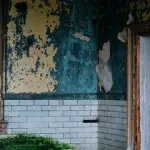
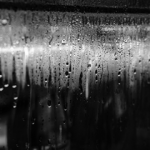
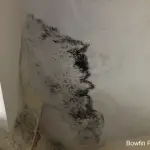

As a practicing Building Surveyor for a number of local authorities, I was alarmed by the title of your article. I was relieved to see that the title was just a ploy to attract any potential reader whom may be considering disguising any form of disrepair.
To confirm that which you said; it’s practically impossible to hide damp from a Building Surveyor due to the fact that evidence of damp is more involved than some dodgy paint work.
It is a good article for those thinking of making the mistake of acting dishonest.
Hi J George, thank you for your comments, they are very much appreciated. I wrote the article because there are many home owners who think they can hide damp from a surveyor. They are searching Google for how to do this. My thinking is exactly how to describe and to help people falling into this trap and to do it the right way at the outset.
I have just had a HBC survey carried out on a property built in 1900. The result of the survey was that the house I was purchasing was riddled with damp. There was absolutely no ventilation in the house whatsoever and the vendor’s had tried to hide it from the surveyor by painting over the walls and stacking everything they could think of up against the walls to prevent the surveyor from getting to them. The surveyor did manage it though and found the damp meter readings to be very high and the interior walls saturated with moisture. The fireplaces were blocked up with no means of ventilation, the roof tiles had no ventilation and the exterior walls were heavily painted also trapping moisture and condensation within the bricks. I didn’t go through with the purchase! However am now out of pocket on survey and search fees.
Hi Kelly, thank you for your comment and contribution to this article. Whilst you have spent money on an abortive survey, and I know this is very annoying, but this is a whole lot cheaper than buying a house without knowing. It would have cost a lot more if you hadn’t had the survey and gone ahead with the house purchase.
We have been living in our house for 5 years now and have noticed that we have damp in the external kitchen wall where the conservatory was attached (before we bought property). We’ve noticed that the damp proof course on the conservatory is only 1 brick above the ground, however, on the existing house is 2 bricks above ground. Is there anything we can do in terms of the survey that was carried out at the time of purchase or do we just have to ‘suck it up’ and fix the damp ourselves? Thanks
Hi Sara, an interesting question, so thank you for asking.
What I’d say is it doesn’t harm for you to approach the company who carried out the survey for you on your house. But check what was covered by your survey in the first place and what was included in the original engagement with the surveyor. I’m sure they won’t simply back down and agree with you.
But what I would say is to invite them to your house to view the problem and see what comments they have. See if they agree with the expert who has suggested what’s causing the damp. This of course assumes you’ve had an expert look at the damp, and it is them who have confirmed it’s the two levels of damp course which is causing the damp problem you have.
Please update us on your progress and the outcome on this, thank you.
Hi Russell,
We are looking to buy a property that has been redecorated throughout and looks really good…no shoddy paintwork, mold or damp in sight. Upon research it turns out the seller bought it 4 months ago at auction and the pictures reveal extensive mold and damp throughout.
I was wondering if a comprehensive building survey will be able fo reveal if the mold and damp issue has actually been corrected properly and has not only just been plastered over. I can see cupboards have been fixed on the kitchen wall where the previous damp was…
I’m aware of walls being tested for damp bit can it also be checked for mold without removing the plaster board etc?
Can you recommend any surveyors that would be able to help?
Hi Gemma,
Thank you for your comment and question.
It’s possible the work wasn’t done correctly and I would recommend you begin with a full survey – I can’t really recommend a specific surveyor, but please make sure the one you choose is a RICS certified surveyor.
I wouldn’t be worried about the mould that was on the kitchen walls at cupboard level, assuming these are the wall-mounted cupboards at eye level, as any mould at height is bound to be from condensation, which is common in badly ventilated kitchens with little or no extraction. Cooking in kitchens creates a lot of steam (and hence condensation), so if there wasn’t an extractor hood over the hob, this would have lead to mould.
That being said, mould higher up can be caused by penetrating damp, but penetrating damp can only result from an outside wall (i.e. damp on internal walls can only really be condensation damp, rising damp or from a broken or leaking internal pipe or similar). Any penetrating damp will be caused by some form of external leak (which then penetrates through from the outside). For example, this can happen from broken or damaged gutters. Did you have a look up at the guttering and did this look new and refurbished? If so, and if there was a problem beforehand, new gutters should have solved any penetrating damp issues.
However, if the damp was behind the lower cupboards in the kitchen, this may relate to other damp problems, like penetrating damp or rising damp – please confirm where the damp and mould was shown before.
Also, do you know the ‘reputation’ of the builders who renovated the property? Was this their first renovation? You could ask them for references from previous houses they’ve refurbished to see if prior homebuyers have been happy. There are cowboy builders who cut corners, but hopefully these builders don’t fall into that category!!
I hope this answers your questions Gemma, please come back with any further questions and please update us with progress, as I love to know how things work out.
Russell 🙂